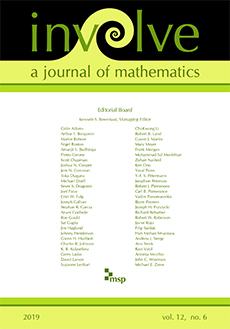Abstract
This paper examines the construction and properties of binary Parseval frames. We address two questions: When does a binary Parseval frame have a complementary Parseval frame? Which binary symmetric idempotent matrices are Gram matrices of binary Parseval frames? In contrast to the case of real or complex Parseval frames, the answer to these questions is not always affirmative. The key to our understanding comes from an algorithm that constructs binary orthonormal sequences that span a given subspace, whenever possible. Special regard is given to binary frames whose Gram matrices are circulants.
Citation
Zachery J. Baker. Bernhard G. Bodmann. Micah G. Bullock. Samantha N. Branum. Jacob E. McLaney. "What is odd about binary Parseval frames?." Involve 11 (2) 219 - 233, 2018. https://doi.org/10.2140/involve.2018.11.219
Information





